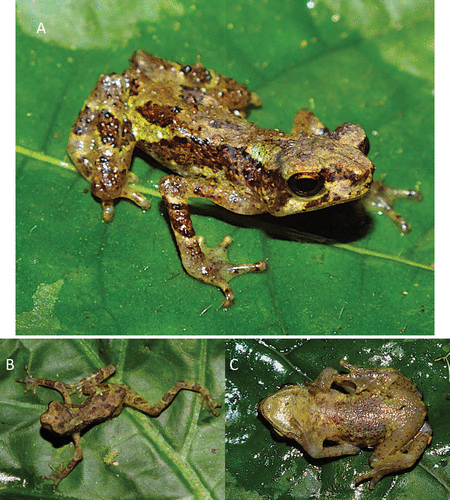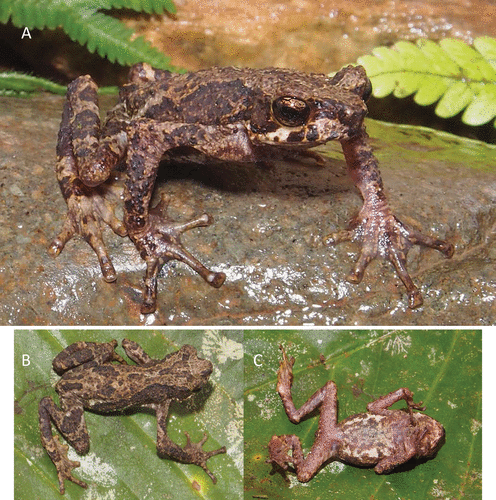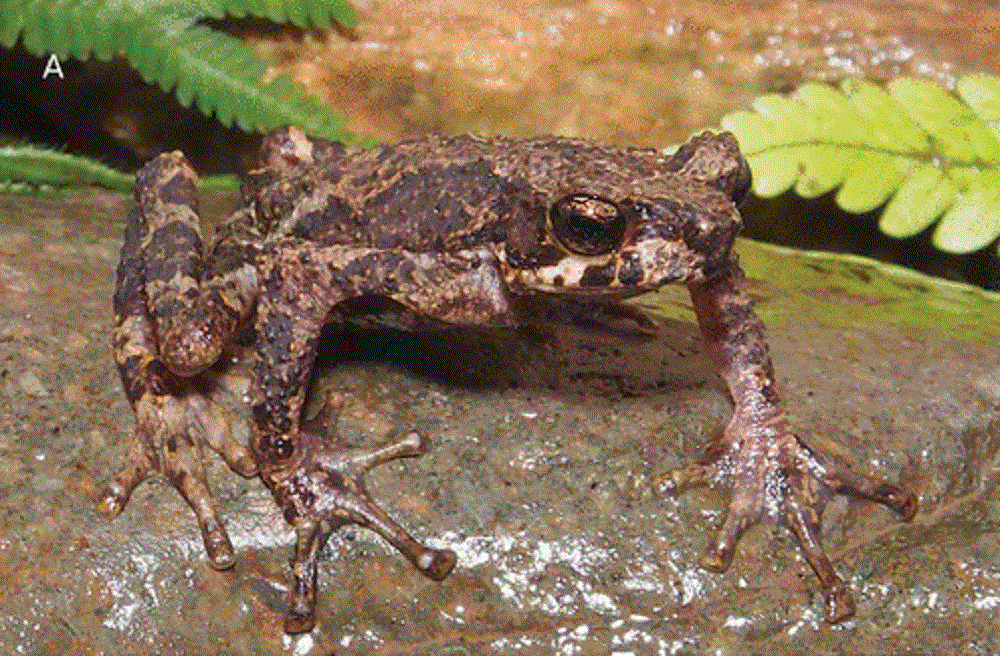- The proposed genus was created to fit two new species of toad.
- The name of the genus, Sigalegalephrynus, was inspired by the toads’ resemblance to a wooden puppet from North Sumatra.
- The toads appear to have mating calls that are unlike those of other amphibians in the Sunda Shelf.
A group of researchers in Indonesia has created a new genus of arboreal toad to fit what they say are two new species, according to a recent article in the journal Herpetologica.
The authors propose that the newly described toads, Sigalegalephrynus minangkabauensis and Sigalegalephrynus mandailinguensis, be classified under the genus Sigalegalephrynus, after finding indications that the two “form a distinct lineage” among Southeast Asian members of the true toad family Bufonidae.
The researchers — from the Indonesian Institute of Sciences (LIPI), the University of Texas, Broward College, Brawijaya University and Hamburg University — came across the species while inventorying the reptiles and amphibians of Sumatra’s highlands in 2013-2014.

The toads live in forests and caves. Brown and medium-sized with gangly limbs that flare out at the end, their common name was inspired by a resemblance to Sigale-gale, a wooden puppet from North Sumatra.
The researchers named the toads after ethnic groups in the provinces in which they were discovered — the Mandailing of North Sumatra and the Minangkabau of Jambi.
The description of Sigalegalephrynus mandailinguensis is based on specimens the researchers found on the forested slopes of Mount Sorikmarapi, a volcano in Batang Gadis National Park.
The description of Sigalegalephrynus minangkabauensis is based on an individual from Mount Kunyit, Jambi, which exhibited close morphological affinities to the specimens from Batang Gadis.
The toads appear to have mating calls that are unlike those of other amphibians in the Sunda Shelf, a biogeographical region that encompasses most of Southeast Asia.
The toads are distinguishable from each other by characteristics like the shape of their finger pads and the webbing of their feet.

The discovery comes amid an increasing urgency to find and classify species in Indonesia, where land is being rapidly cleared of forest and other habitats needed to sustain endemic species, said lead author Utpal Smart.
“With more thorough exploration like ours, Indonesia will probably rank as the most biodiverse country in the world in terms of herpetofauna,” he said in a statement.
Smart noted that the rapid pace of forest destruction in Indonesia — now greater than that of Brazil, previously the highest — particularly crucial because almost half of all amphibians in the country are found nowhere else in the world.
“We hope that our efforts will eventually educate and alert people to the massive yet understated ecological crisis that is playing out in the islands of Sumatra and Java,” he said.
